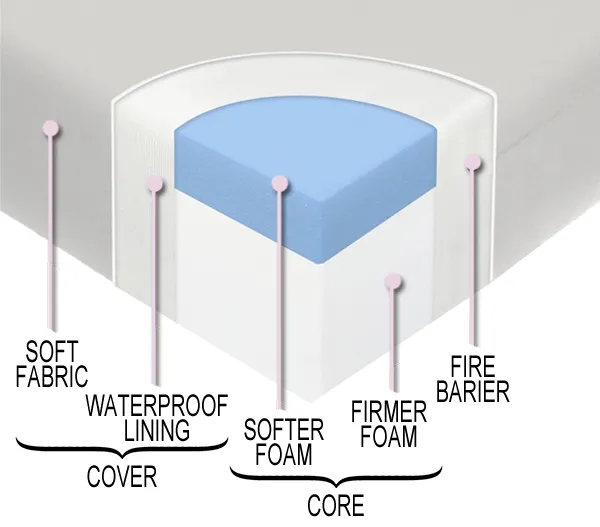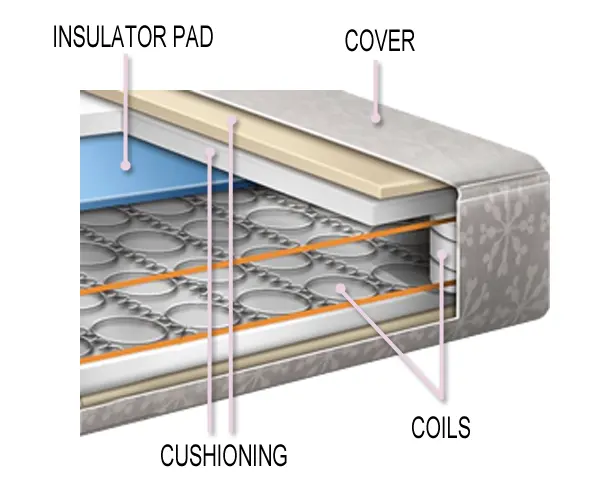Everything you need to know to choose a safe, supportive, and comfortable crib mattress—without the stress.
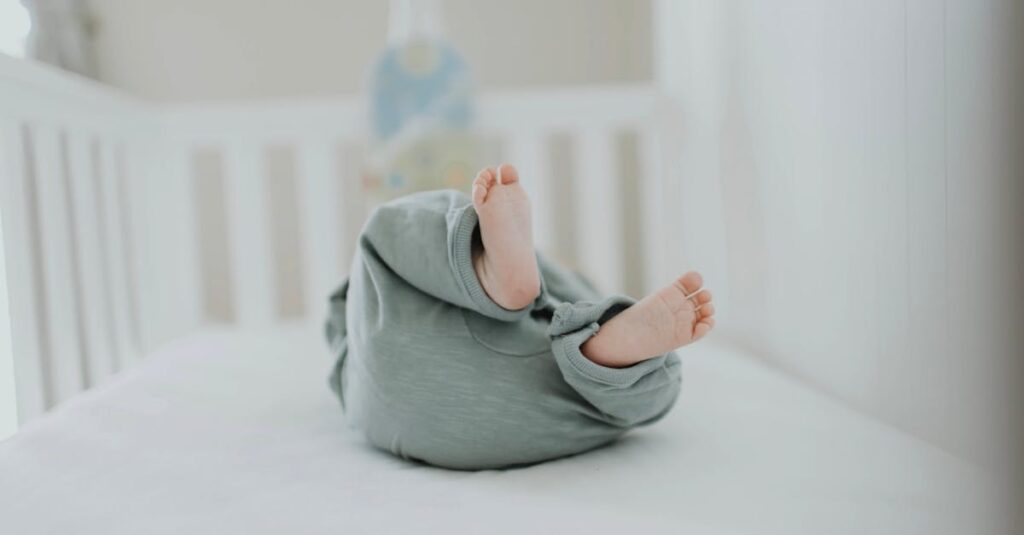
Choosing a crib mattress isn’t just another item to check off your baby registry. It is a decision that can affect your baby’s safety and sleep quality from day one. Over the years, we’ve researched and tested many crib mattresses and learned that selecting the right one can truly make a difference.
In this guide, I’ll break down what truly matters when buying a crib mattress, including safety standards, firmness, size, materials, and more. Whether you’re choosing your very first crib mattress or replacing one that didn’t quite work out, this guide will help you make a confident, informed choice.
? Quick tip: The best crib mattress is firm, fits snugly in the crib with no gaps, and meets all current safety standards. Comfort matters, but safety should always come first!
Why the Crib Mattress Matters More Than You Might Think
Your baby will spend up to 16 hours a day sleeping in their crib during the first year. Yes, I know. When my daughter was a baby, it didn’t seem so to me, either. But they do—some even up to 18 hours per day!
A quality crib mattress can support healthy development, reduce the risk of suffocation, and promote more restful sleep for both, the baby and you. Because their bones and muscles are still developing, proper support is especially important in those early months. A firm surface helps prevent the baby’s face from sinking into the mattress, which lowers the risk of suffocation. And when your baby sleeps better, it often means more consistent sleep (and sanity) for parents, too.
Types of Crib Mattresses
There are two main types, foam and innerspring crib mattresses. As long as you choose a high-quality model, both types can be equally safe and supportive for your baby. That’s why the decision often comes down to personal preference, budget, and how you plan to use the mattress in the long term.
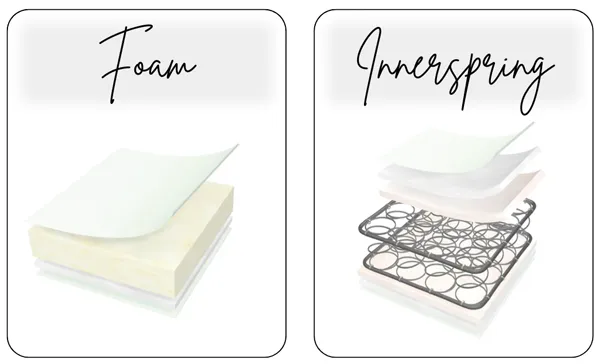
Foam Crib Mattresses
Foam crib mattresses are usually made with a high-density polyurethane foam core, surrounded by a fabric or vinyl cover. While their internal structure is simpler than innerspring mattresses, they can still provide excellent firmness and support when made well.
Key Features:
- Lightweight: Most foam models weigh under 13 pounds, making sheet changes easier, which is especially helpful for nighttime messes.
- Available in multiple sizes and thicknesses: Ranging from 3 to 6 inches, and offered in both standard and mini crib sizes.
- Affordable: Foam mattresses are typically more budget-friendly than innerspring models.
How to Pick a Quality Foam Crib Mattress:
- Foam density matters: Denser foam offers better support and resists sagging. Unfortunately, manufacturers aren’t required to list foam density on the label, but you can usually compare weights to get a good idea. → Heavier foam crib mattresses tend to use higher-density, better-quality foam.
- Fire barrier: Make sure the mattress uses a non-toxic, chemical-free fire barrier.
- Cover material: Covers can be vinyl, fabric, or a combination of both.
- Vinyl covers are waterproof and easy to wipe clean, but may reduce breathability and make crinkly noises if cheaply made.
- Fabric covers feel softer and are more breathable, but may not be fully waterproof unless treated or layered.
- Some hybrid covers have vinyl on the inside and fabric on top for the best of both worlds.
? A good waterproof cover keeps liquids from reaching the mattress core. A water-resistant cover only delays penetration, so double-check the label!
Innerspring Crib Mattress
Innerspring crib mattresses are built with steel coils at the core and multiple layers of cushioning on top. This gives them a more complex (and often more durable) structure compared to foam mattresses.
Key Features:
- Supportive and bouncy: Coils offer excellent support, but they need padding to soften the surface.
- Heavier build: Weighing between 15 and 30 pounds, depending on coil count and materials.
- Durability: A well-made innerspring mattress can outlast many foam models, especially when used into toddlerhood.
How to Pick a Quality Innerspring Crib Mattress:
- Coil count and gauge: Generally, more coils mean better support. If there are more springs, they are closer together, which results in a firmer structure. However, thicker steel, measured in lower gauge numbers, is just as important. A good mattress typically has 135–150 coils with a gauge of 15.5 or lower.
- Insulator pad: Prevents coils from poking through the mattress’s surface. The best options are:
- Fiber wrap pads (made from recycled cloth)
- Coconut coir pads (more expensive but very durable)
- Avoid woven polyester, hard felt, or plastic mesh insulator pads (they break down faster and can become unsafe over time)
- Cushioning layers: Look for foam or cotton. Polyester cushions are cheaper but less durable and prone to sagging.
- Cover material: Like foam mattresses, choose a waterproof vinyl, breathable fabric, or a combination of both.
? Never buy an innerspring crib mattress without knowing its internal structure! Reputable brands provide clear labeling or include a cutaway diagram in the packaging.
Want a deeper look into each type? Read our full Foam vs. Innerspring Crib Mattress Guide
Unique Baby Crib Mattress: Newton Wovenaire
So yes, most crib mattresses are either foam or innerspring—but there’s one notable exception. The Newton Wovenaire mattress is made from a unique, proprietary material that’s more than 90% air and 10% food-grade polymer. This structure gives it two standout features: it’s fully breathable and completely washable, inside and out.
Because of its innovative design, excellent support, high-quality materials, and strong safety reputation, the Newton Wovenaire has become one of the most recommended and best-rated crib mattresses on the market.
? Read our full Newton Wovenaire crib mattress review
? Want a natural option? Many crib mattresses—foam, innerspring, or even unique—now come in organic or GREENGUARD Gold-certified versions. We break down what that means in the FAQ below.
What to Look For in a Crib Mattress
Buying a safe, supportive crib mattress is just as important as choosing the crib itself. Here’s what really matters—and how to tell if a mattress meets each standard.
✅ Firmness: The #1 Safety Factor
Unlike adult mattresses that focus on softness, crib mattresses should prioritize firmness and safety.
Firm is safer!
A firm crib mattress significantly reduces the risk of SIDS (Sudden Infant Death Syndrome). Your baby’s head won’t sink into the mattress, which helps prevent suffocation. That is especially important before they learn to roll or push up. It also supports healthy muscle and bone development.
How to test it:
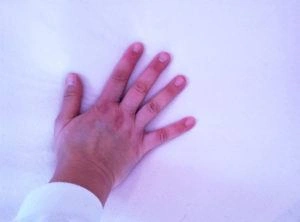
Press the center and edges with your palm. If the mattress springs back quickly and offers strong resistance, it’s firm enough. As a rule of thumb, if it feels too firm for you, it’s likely just right for your baby.
? Want to know more? Check out my full guide on Why does a crib mattress have to be firm?
✅ Snug Fit in the Crib
A good fit is another essential safety factor. Even the highest-quality mattress won’t be safe if it doesn’t fit snugly in your crib.
For full-size cribs, U.S. safety regulations require that both crib frames and standard crib mattresses follow the same sizing. This means that most new mattresses will fit properly in a standard crib. But double-check to be sure:
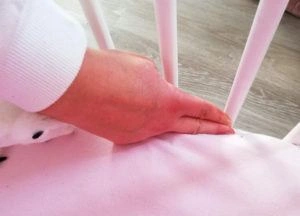
- Place the mattress in the crib.
- Try sliding two fingers between the edge of the mattress and the crib frame.
- If the gap is wider than two fingers, the mattress is too small and may be unsafe.
✅ Breathability
A breathable crib mattress allows air to flow more easily through its core, which can help regulate your baby’s temperature. It may also dry more quickly, preventing mold and mildew buildup. That’s especially helpful if your baby tends to sweat or you live in a humid area.
Most modern crib mattresses offer sufficient breathability, and in our reviews, we usually see good airflow, even in models with waterproof covers.
Waterproof covers are often considered less breathable due to the layer that prevents liquids from entering the crib. However, many are designed with ventilation features, such as a breathable fabric bottom or side ventilation holes. These allow for enough airflow while still protecting the mattress from moisture.
? Do “breathable” crib mattresses prevent SIDS?
Some brands promote breathable designs as a way to reduce suffocation or “rebreathing” risks (when a baby inhales their own exhaled CO₂). However, according to the American Academy of Pediatrics, there is currently no solid evidence that breathable mattresses lower the risk of SIDS. That said, they’re not harmful either, as long as the mattress is firm and fits snugly.
Bottom line: Breathability is a nice bonus, but it’s not a must-have.
✅ Crib Mattress Covers: Waterproof vs. Water-Resistant
Protect your mattress from leaks, mold, and bacteria.
Even if your crib mattress claims to be waterproof, I still recommend using a separate cover. Babies are messy (adorably so), and between diaper leaks, spit-up, and the occasional bottle mishap, you’re going to want an extra layer of protection.
What’s the difference between waterproof and water-resistant?
- Waterproof covers are fully sealed and prevent any liquid from soaking through. They create a complete barrier between the baby and the mattress. These are the best option for protecting against bigger accidents like blowouts or spills.
- Water-resistant covers, on the other hand, can repel small amounts of liquid for a short time but may eventually absorb moisture if not cleaned up quickly. They’re breathable and often feel softer, but don’t offer the same full protection.
? Tip: Even if your mattress already has a waterproof cover, a separate, removable machine-washable protector makes cleanup way easier and helps preserve the mattress’s lifespan.
What to Look For in a Crib Mattress Cover:
- Snug fit: Make sure it fits tightly over the mattress and doesn’t bunch up under the sheet.
- Vinyl-free & phthalate-free: Some older waterproof covers use PVC (vinyl), which can contain phthalates—chemicals that are best avoided around developing babies. Look for covers labeled PVC-free, phthalate-free, and vinyl-free.
- Quiet & soft: Some waterproof covers can crinkle or feel plasticky. A soft, quiet material like flannel-backed polyester or organic cotton can make a big difference in comfort and noise.
- Machine-washable: Always! You’ll want to toss it in the wash without a second thought.
✅ Safety Certifications
Choosing the right crib mattress is just as important, if not more important, than choosing a safe crib. Only the correct combination of both ensures your baby has a secure and healthy sleep environment.
Every new crib mattress sold in the U.S. must meet strict safety standards set by:
Manufacturers are also required to disclose all materials used in their mattresses. If you can’t find this information or the seller won’t provide it, that’s a red flag.
In addition to basic safety compliance, look for these independent certifications to make sure you’re choosing a mattress that’s truly non-toxic and baby-safe:
Greenguard Gold:
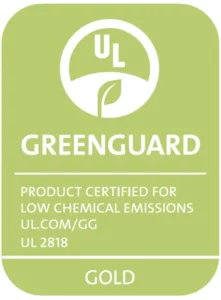
Indicates that the mattress has low chemical emissions and is free from VOCs (volatile organic compounds), formaldehyde, phthalates, and other harmful substances often found in synthetic materials.
CertiPUR-US (for foam):
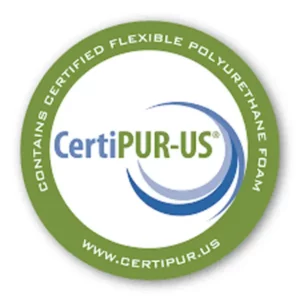
This certification applies specifically to foam. It ensures that the foam is made without ozone depleters, heavy metals like mercury or lead, PBDEs, or formaldehyde. It also tests for performance and durability.
? More: CertiPUR-US certified foams
GOTS / GOLS (for organic crib mattresses):
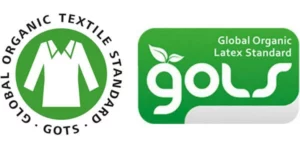
GOTS (Global Organic Textile Standard): Applies to textiles like organic cotton. GOTS certification confirms the materials are truly organic and processed without harmful chemicals.
GOLS (Global Organic Latex Standard): Applies to organic latex. GOLS ensures that the latex is sourced, processed, and manufactured to strict organic and non-toxic standards.
? Want to learn more about what makes a crib mattress truly organic? Read our guide to organic crib mattresses here.
Crib Mattress FAQs
Common Crib Mattress Features: Worth It or Not?
| Feature | Worth It? | Why |
|---|---|---|
| Breathable core | ? Yes | Improves airflow, may reduce sweating or overheating |
| Organic materials | ? If budget allows | Fewer chemicals, though not necessarily safer than certified non-organic |
| Waterproof cover | ✅ Must-have | Makes cleanup so much easier |
| Machine-washable cover | ? Convenient | Great bonus for busy parents |
| Cooling gel or air channels | ? Not essential | Can drive up cost without major benefits for most babies |
Final Thoughts
When it comes to crib mattresses, safety, support, and fit matter most. Features like breathability and dual-sided design are great bonuses, but don’t feel pressured into buying the most expensive model.
You don’t need to spend a fortune, but you do want peace of mind—especially during those long newborn nights.
Next Up → Check out our list of the best crib mattresses we’ve tested. It includes budget-friendly, organic, and dual-sided options for every kind of sleeper (and every kind of parent!).


